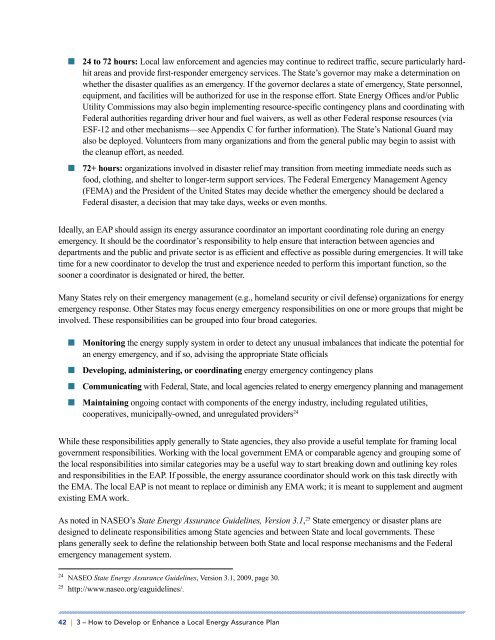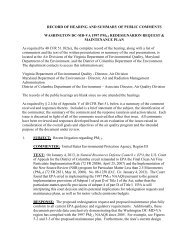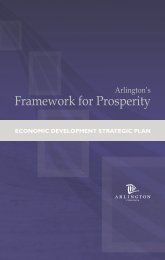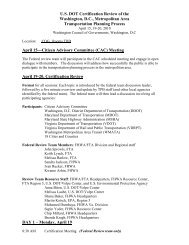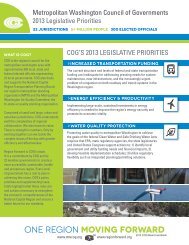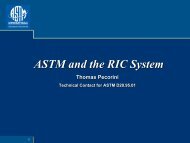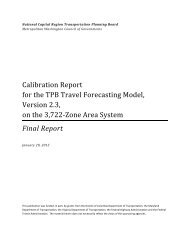PTI Local Government Energy Assurance Guidelines - Metropolitan ...
PTI Local Government Energy Assurance Guidelines - Metropolitan ...
PTI Local Government Energy Assurance Guidelines - Metropolitan ...
Create successful ePaper yourself
Turn your PDF publications into a flip-book with our unique Google optimized e-Paper software.
■ ■ 24 to 72 hours: <strong>Local</strong> law enforcement and agencies may continue to redirect traffic, secure particularly hardhit<br />
areas and provide first-responder emergency services. The State’s governor may make a determination on<br />
whether the disaster qualifies as an emergency. If the governor declares a state of emergency, State personnel,<br />
equipment, and facilities will be authorized for use in the response effort. State <strong>Energy</strong> Offices and/or Public<br />
Utility Commissions may also begin implementing resource-specific contingency plans and coordinating with<br />
Federal authorities regarding driver hour and fuel waivers, as well as other Federal response resources (via<br />
ESF-12 and other mechanisms—see Appendix C for further information). The State’s National Guard may<br />
also be deployed. Volunteers from many organizations and from the general public may begin to assist with<br />
the cleanup effort, as needed.<br />
■ ■ 72+ hours: organizations involved in disaster relief may transition from meeting immediate needs such as<br />
food, clothing, and shelter to longer-term support services. The Federal Emergency Management Agency<br />
(FEMA) and the President of the United States may decide whether the emergency should be declared a<br />
Federal disaster, a decision that may take days, weeks or even months.<br />
Ideally, an EAP should assign its energy assurance coordinator an important coordinating role during an energy<br />
emergency. It should be the coordinator’s responsibility to help ensure that interaction between agencies and<br />
departments and the public and private sector is as efficient and effective as possible during emergencies. It will take<br />
time for a new coordinator to develop the trust and experience needed to perform this important function, so the<br />
sooner a coordinator is designated or hired, the better.<br />
Many States rely on their emergency management (e.g., homeland security or civil defense) organizations for energy<br />
emergency response. Other States may focus energy emergency responsibilities on one or more groups that might be<br />
involved. These responsibilities can be grouped into four broad categories.<br />
■ ■ Monitoring the energy supply system in order to detect any unusual imbalances that indicate the potential for<br />
an energy emergency, and if so, advising the appropriate State officials<br />
■ ■ Developing, administering, or coordinating energy emergency contingency plans<br />
■ ■ Communicating with Federal, State, and local agencies related to energy emergency planning and management<br />
■ ■ Maintaining ongoing contact with components of the energy industry, including regulated utilities,<br />
cooperatives, municipally-owned, and unregulated providers 24<br />
While these responsibilities apply generally to State agencies, they also provide a useful template for framing local<br />
government responsibilities. Working with the local government EMA or comparable agency and grouping some of<br />
the local responsibilities into similar categories may be a useful way to start breaking down and outlining key roles<br />
and responsibilities in the EAP. If possible, the energy assurance coordinator should work on this task directly with<br />
the EMA. The local EAP is not meant to replace or diminish any EMA work; it is meant to supplement and augment<br />
existing EMA work.<br />
As noted in NASEO’s State <strong>Energy</strong> <strong>Assurance</strong> <strong>Guidelines</strong>, Version 3.1, 25 State emergency or disaster plans are<br />
designed to delineate responsibilities among State agencies and between State and local governments. These<br />
plans generally seek to define the relationship between both State and local response mechanisms and the Federal<br />
emergency management system.<br />
24<br />
NASEO State <strong>Energy</strong> <strong>Assurance</strong> <strong>Guidelines</strong>, Version 3.1, 2009, page 30.<br />
25<br />
http://www.naseo.org/eaguidelines/.<br />
42 | 3 – How to Develop or Enhance a <strong>Local</strong> <strong>Energy</strong> <strong>Assurance</strong> Plan


